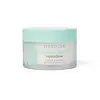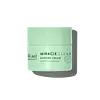What's inside
What's inside
 Key Ingredients
Key Ingredients

 Benefits
Benefits

 Concerns
Concerns

 Ingredients Side-by-side
Ingredients Side-by-side

Water
Skin ConditioningLavandula Angustifolia Flower Water
Skin ConditioningC13-15 Alkane
SolventGlycerin
HumectantNiacinamide
SmoothingCaprylic/Capric Triglyceride
MaskingCetearyl Alcohol
EmollientCoco-Caprylate/Caprate
EmollientOctyldodecanol
EmollientZinc PCA
HumectantPolyacrylate Crosspolymer-6
Emulsion StabilisingSodium Acrylates Copolymer
Phenoxyethanol
PreservativeDiheptyl Succinate
EmollientGlyceryl Stearate Citrate
EmollientLactobacillus Ferment Lysate
Skin Conditioning1,2-Hexanediol
Skin ConditioningCapryloyl Glycerin/Sebacic Acid Copolymer
Skin ConditioningLecithin
EmollientPanthenol
Skin ConditioningTetrasodium Glutamate Diacetate
Ceramide NP
Skin ConditioningEthylhexylglycerin
Skin ConditioningSodium Hydroxide
BufferingAloe Barbadensis Leaf Juice
Skin ConditioningSodium Hyaluronate
HumectantWater, Lavandula Angustifolia Flower Water, C13-15 Alkane, Glycerin, Niacinamide, Caprylic/Capric Triglyceride, Cetearyl Alcohol, Coco-Caprylate/Caprate, Octyldodecanol, Zinc PCA, Polyacrylate Crosspolymer-6, Sodium Acrylates Copolymer, Phenoxyethanol, Diheptyl Succinate, Glyceryl Stearate Citrate, Lactobacillus Ferment Lysate, 1,2-Hexanediol, Capryloyl Glycerin/Sebacic Acid Copolymer, Lecithin, Panthenol, Tetrasodium Glutamate Diacetate, Ceramide NP, Ethylhexylglycerin, Sodium Hydroxide, Aloe Barbadensis Leaf Juice, Sodium Hyaluronate
Water
Skin ConditioningGlycerin
HumectantPropanediol
SolventCaprylic/Capric Triglyceride
MaskingDicaprylyl Ether
EmollientCetearyl Alcohol
EmollientPentylene Glycol
Skin Conditioning1,2-Hexanediol
Skin ConditioningCitrus Aurantium Bergamia Fruit Oil
MaskingSalvia Sclarea Oil
MaskingDiisostearyl Malate
EmollientPentaerythrityl Tetraethylhexanoate
EmollientSuccinic Acid
BufferingPanthenol
Skin ConditioningSodium Polyacryloyldimethyl Taurate
Emulsion StabilisingHydroxyethyl Acrylate/Sodium Acryloyldimethyl Taurate Copolymer
Emulsion StabilisingSucrose Polystearate
EmollientCetearyl Olivate
Sorbitan Olivate
EmulsifyingHydrogenated Polyisobutene
EmollientPoly C10-30 Alkyl Acrylate
Emulsion StabilisingDipotassium Glycyrrhizate
HumectantEthylhexylglycerin
Skin ConditioningGlyceryl Acrylate/Acrylic Acid Copolymer
HumectantTocopherol
AntioxidantBehenyl Alcohol
EmollientXanthan Gum
EmulsifyingLimonene
PerfumingLinalool
PerfumingWater, Glycerin, Propanediol, Caprylic/Capric Triglyceride, Dicaprylyl Ether, Cetearyl Alcohol, Pentylene Glycol, 1,2-Hexanediol, Citrus Aurantium Bergamia Fruit Oil, Salvia Sclarea Oil, Diisostearyl Malate, Pentaerythrityl Tetraethylhexanoate, Succinic Acid, Panthenol, Sodium Polyacryloyldimethyl Taurate, Hydroxyethyl Acrylate/Sodium Acryloyldimethyl Taurate Copolymer, Sucrose Polystearate, Cetearyl Olivate, Sorbitan Olivate, Hydrogenated Polyisobutene, Poly C10-30 Alkyl Acrylate, Dipotassium Glycyrrhizate, Ethylhexylglycerin, Glyceryl Acrylate/Acrylic Acid Copolymer, Tocopherol, Behenyl Alcohol, Xanthan Gum, Limonene, Linalool
 Reviews
Reviews

Ingredients Explained
These ingredients are found in both products.
Ingredients higher up in an ingredient list are typically present in a larger amount.
1,2-Hexanediol is a synthetic liquid and another multi-functional powerhouse.
It is a:
- Humectant, drawing moisture into the skin
- Emollient, helping to soften skin
- Solvent, dispersing and stabilizing formulas
- Preservative booster, enhancing the antimicrobial activity of other preservatives
This ingredient is an emollient, solvent, and texture enhancer. It is considered a skin-softener by helping the skin prevent moisture loss.
It helps thicken a product's formula and makes it easier to spread by dissolving clumping compounds.
Caprylic Triglyceride is made by combining glycerin with coconut oil, forming a clear liquid.
While there is an assumption Caprylic Triglyceride can clog pores due to it being derived from coconut oil, there is no research supporting this.
Learn more about Caprylic/Capric TriglycerideCetearyl alcohol is a mixture of two fatty alcohols: cetyl alcohol and stearyl alcohol. It is mainly used as an emulsifier. Emulsifiers help prevent the separation of oils and products. Due to its composition, it can also be used to thicken a product or help create foam.
Cetearyl alcohol is an emollient. Emollients help soothe and hydrate the skin by trapping moisture.
Studies show Cetearyl alcohol is non-toxic and non-irritating. The FDA allows products labeled "alcohol-free" to have fatty alcohols.
This ingredient is usually derived from plant oils such as palm, vegetable, or coconut oils. There is debate on whether this ingredient will cause acne.
Due to the fatty acid base, this ingredient may not be Malassezia folliculitis safe.
Learn more about Cetearyl AlcoholEthylhexylglycerin (we can't pronounce this either) is commonly used as a preservative and skin softener. It is derived from glyceryl.
You might see Ethylhexylglycerin often paired with other preservatives such as phenoxyethanol. Ethylhexylglycerin has been found to increase the effectiveness of these other preservatives.
Glycerin is already naturally found in your skin. It helps moisturize and protect your skin.
A study from 2016 found glycerin to be more effective as a humectant than AHAs and hyaluronic acid.
As a humectant, it helps the skin stay hydrated by pulling moisture to your skin. The low molecular weight of glycerin allows it to pull moisture into the deeper layers of your skin.
Hydrated skin improves your skin barrier; Your skin barrier helps protect against irritants and bacteria.
Glycerin has also been found to have antimicrobial and antiviral properties. Due to these properties, glycerin is often used in wound and burn treatments.
In cosmetics, glycerin is usually derived from plants such as soybean or palm. However, it can also be sourced from animals, such as tallow or animal fat.
This ingredient is organic, colorless, odorless, and non-toxic.
Glycerin is the name for this ingredient in American English. British English uses Glycerol/Glycerine.
Learn more about GlycerinPanthenol is a common ingredient that helps hydrate and soothe the skin. It is found naturally in our skin and hair.
There are two forms of panthenol: D and L.
D-panthenol is also known as dexpanthenol. Most cosmetics use dexpanthenol or a mixture of D and L-panthenol.
Panthenol is famous due to its ability to go deeper into the skin's layers. Using this ingredient has numerous pros (and no cons):
Like hyaluronic acid, panthenol is a humectant. Humectants are able to bind and hold large amounts of water to keep skin hydrated.
This ingredient works well for wound healing. It works by increasing tissue in the wound and helps close open wounds.
Once oxidized, panthenol converts to pantothenic acid. Panthothenic acid is found in all living cells.
This ingredient is also referred to as pro-vitamin B5.
Learn more about PanthenolWater. It's the most common cosmetic ingredient of all. You'll usually see it at the top of ingredient lists, meaning that it makes up the largest part of the product.
So why is it so popular? Water most often acts as a solvent - this means that it helps dissolve other ingredients into the formulation.
You'll also recognize water as that liquid we all need to stay alive. If you see this, drink a glass of water. Stay hydrated!
Learn more about Water